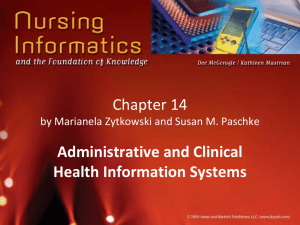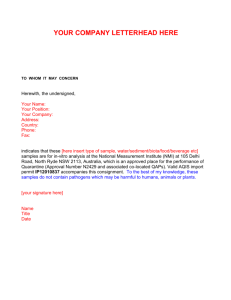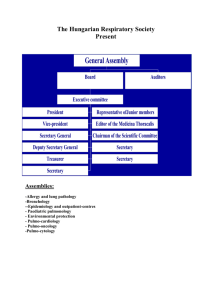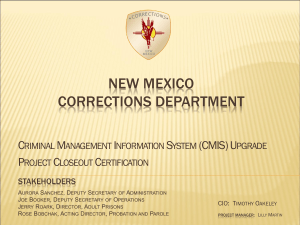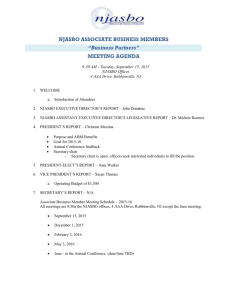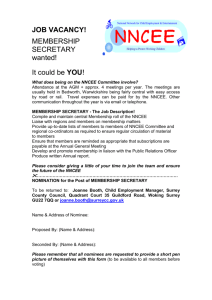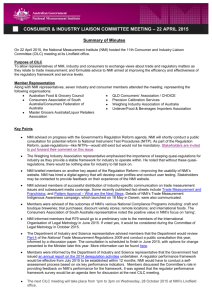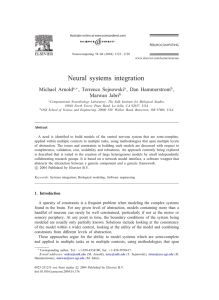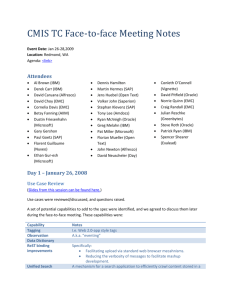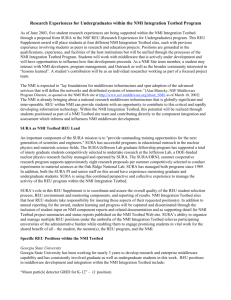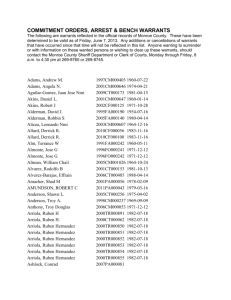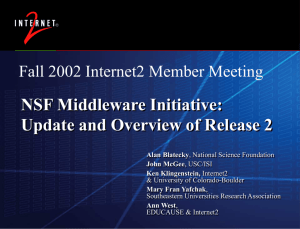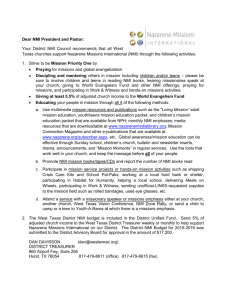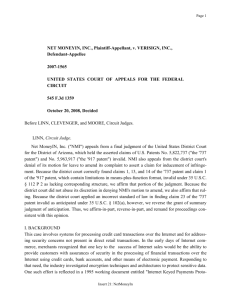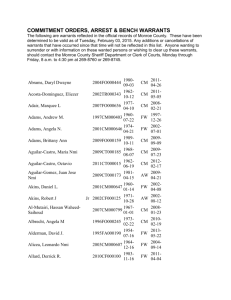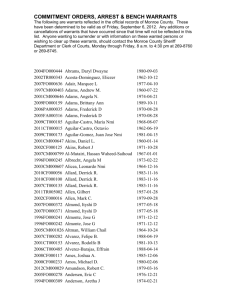NMI section by section-1
advertisement
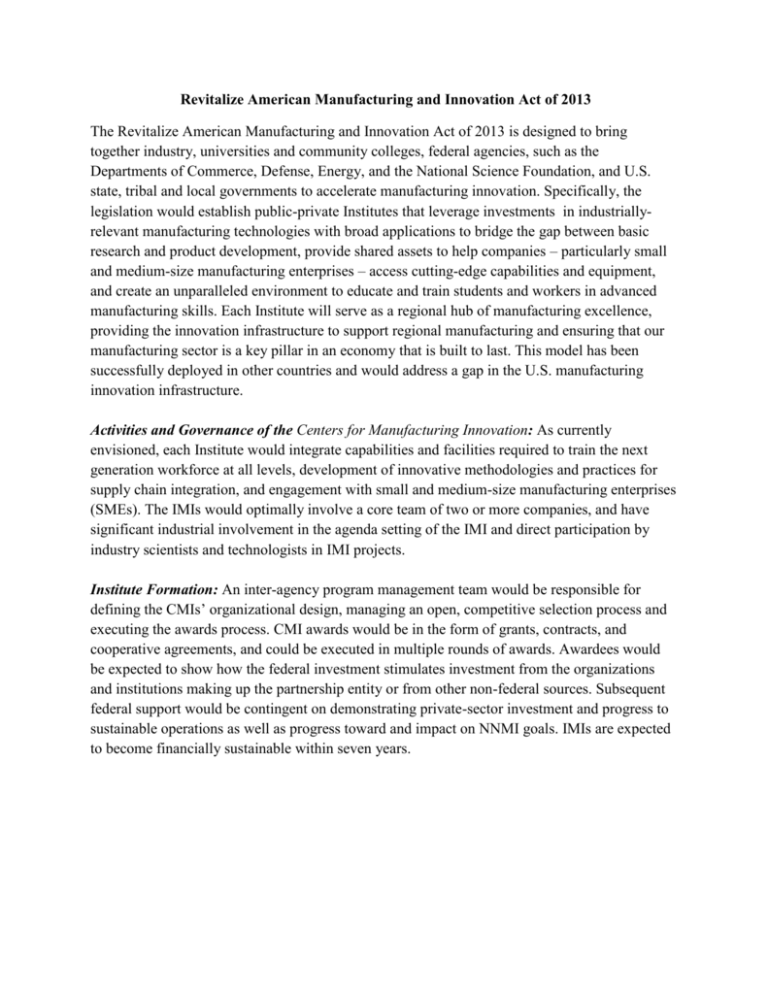
Revitalize American Manufacturing and Innovation Act of 2013 The Revitalize American Manufacturing and Innovation Act of 2013 is designed to bring together industry, universities and community colleges, federal agencies, such as the Departments of Commerce, Defense, Energy, and the National Science Foundation, and U.S. state, tribal and local governments to accelerate manufacturing innovation. Specifically, the legislation would establish public-private Institutes that leverage investments in industriallyrelevant manufacturing technologies with broad applications to bridge the gap between basic research and product development, provide shared assets to help companies – particularly small and medium-size manufacturing enterprises – access cutting-edge capabilities and equipment, and create an unparalleled environment to educate and train students and workers in advanced manufacturing skills. Each Institute will serve as a regional hub of manufacturing excellence, providing the innovation infrastructure to support regional manufacturing and ensuring that our manufacturing sector is a key pillar in an economy that is built to last. This model has been successfully deployed in other countries and would address a gap in the U.S. manufacturing innovation infrastructure. Activities and Governance of the Centers for Manufacturing Innovation: As currently envisioned, each Institute would integrate capabilities and facilities required to train the next generation workforce at all levels, development of innovative methodologies and practices for supply chain integration, and engagement with small and medium-size manufacturing enterprises (SMEs). The IMIs would optimally involve a core team of two or more companies, and have significant industrial involvement in the agenda setting of the IMI and direct participation by industry scientists and technologists in IMI projects. Institute Formation: An inter-agency program management team would be responsible for defining the CMIs’ organizational design, managing an open, competitive selection process and executing the awards process. CMI awards would be in the form of grants, contracts, and cooperative agreements, and could be executed in multiple rounds of awards. Awardees would be expected to show how the federal investment stimulates investment from the organizations and institutions making up the partnership entity or from other non-federal sources. Subsequent federal support would be contingent on demonstrating private-sector investment and progress to sustainable operations as well as progress toward and impact on NNMI goals. IMIs are expected to become financially sustainable within seven years. Revitalize American Manufacturing and Innovation Act of 2013 Section by Section Section 1 – Title Section 2 - Findings Section 3 (a) Establishment o Establishes a Network for Manufacturing Innovation (NMI) Program within the National Institute of Standards and Technology. o Defines scope of the program – to improve American manufacturing competitiveness, stimulate innovation, facilitate transition of novel technologies to commercialization, provide access to infrastructure and technologies for SMEs, accelerate workforce development, exchange best practices, and leverage nonFederal capital. (b) Designation o Directs the Secretary of Commerce to establish a network of centers for manufacturing innovation through the program director. o Designates the Network as the Network for Manufacturing Innovation. (c) Centers for Manufacturing Innovation o Defines Center for Manufacturing Innovation (CMI) as a center that addresses challenges in advanced manufacturing, focuses on manufacturing processes, new materials or technologies, and supply chain methodologies. o CMIs will focus on improving American manufacturing competitiveness, accelerating investment in advanced manufacturing capacity, and enabling commercial application of new technologies. o CMIs will include active participation among industry, research universities institutions, community colleges, and other entities like Federal labs, technical schools, and state, local, and tribal governments. o Activities of the CMIs include research and development, proof-of-concept and prototyping, and reducing the cost, time, and risk of commercialization of new technologies and processes. CMIs will also develop education and training programs and conduct outreach and engagement with small and mid-size businesses. o Existing manufacturing centers, including the National Additive Manufacturing Innovation Institute, will be considered part of the NMI. (d) Funding o The Secretary of Commerce will conduct a competitive, merit based selection process upon receiving applications for CMIs. o During selection the Secretary will consult with agencies whose missions overlap with advanced manufacturing. o Priority will be given to applications that have potential for economic impact, the ability to leverage continuing non-Federal support, engagement with SMEs, workforce development plans, and regional assets. o CMIs must be self-sustaining after 7 years from the date of first funding assistance. (e) National Program Office o A National Program Office will be established within NIST to oversee the NMI, with the Secretary taking input from a range of stakeholders during the establishment process, and provide a report on the NMI strategic plan to Congress. o The Program Office will manage the NMI, engage Federal agencies, develop and implement a strategic plan to guide the NMI, disseminate best practices, and establish a clearinghouse of public information regarding the program. o The National Program Office will work with the Hollings Manufacturing Extension Partnership to ensure that the NMI reaches small and mid-size businesses. (f) Reporting o Each CMI are required to submit annual performance reports to the Secretary. o The Secretary will provide an annual report to Congress detailing the performance of each CMI. o GAO will conduct an assessment of the NMI every third year. (g) Additional authority o Describes additional authorities ascribed to the Secretary, including appointing personnel and transferring funds necessary to carry out the Program. (h) Patents o 35 U.S.C. 18 shall not apply if financial assistance is awarded under this section for the purpose of planning, establishing, or supporting CMIs. (i) Funding o A total one-time, mandatory authorization of $600,000,000 is provided. o No more than 5% of appropriated funds can be used for administrative purposes. o $600,000,000 of appropriated discretionary funds still available for obligation at the enactment of this date is to be repurposed. Section 4 (b) Rare earth economic impact report o The Secretary will conduct a survey measuring the economic impact of China’s rare earth monopoly on the United States and other affected nations. o The Secretary will submit a report detailing the results of the study within 1 year of enactment, and include recommendations on initiating direct dialogue with affected nations and promote cooperative resolutions.
